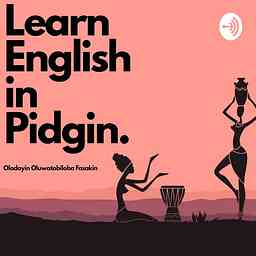
BASIC SIMPLE SENTENCES (PATTERN 1)
3m
·
LEARN ENGLISH IN PIGDIN
·
The first pattern in forming the basic simple sentences is the SUBJECT-PREDICATOR pattern. This pattern is foundational to any sentence formation. The subject is the first word in any sentence and it is the part of the sentence performing the action in the sentence. It is derived with words from the word classes of nouns, pronouns and noun phrases. The predicator comes after the subject and it is the word showing the action being performed by the subject. It is derived with words from the word classes of verbs and verb phrases. Examples are: I(pronoun) smiled; Oladoyin(noun) smiled; The lady(noun phrase) smiled; She was smiling. "Smiled" in the examples is a verb while "was smiling" is a verb phrase. TAKE AWAY: Imagination is everything. It is the preview of life's coming attractions. ––– Albert Einstein.
The episode BASIC SIMPLE SENTENCES (PATTERN 1) from the podcast LEARN ENGLISH IN PIGDIN has a duration of
3:39. It was first published
More episodes from LEARN ENGLISH IN PIGDIN
PATTERN 9 (BASIC SIMPLE SENTENCES)
Pattern 9 is the last pattern used in forming a basic simple sentence. This pattern has 4 parts: Subject, Predicator, Direct Object, and Adverbial. In the previous episodes, subject, predicator, and direct object have been explained. In this episode, the adverbial is explained. The adverbial is an adverb and its function is to qualify a noun. Example of pattern 9 sentences: I placed the food on the dining table. "I" is the subject; "placed" is the predicator; "the food" is the direct object, and "on the dining table" is the adverbial. TAKE AWAY: ALWAYS CELEBRATE YOUR VICTORIES — BIG OR SMALL
BASIC SIMPLE SENTENCES (PATTERN 8)
Pattern 8 of the basic simple sentences has 4 parts: Subject, predicator, direct object, and adjectival object complement. The adjectival object complement is realised with adjectives, and adjectival phrases. This complement describes the direct object which could be a noun, noun phrase, or pronoun. EXAMPLE: The news made us happy. The news (SUBJECT) made (PREDICATOR) us (DIRECT OBJECT) happy (ADJ OBJECT COMPLEMENT). TAKE AWAY: We attract to our lives what we say with our mouths.
BASIC SIMPLE SENTENCES (PATTERN 7)
Pattern 7 of the basic simple sentences has 4 parts: Subject, predicator, direct object, and nominal object complement. The nominal object complement is realised with nouns, nouns phrases, and pronouns. This complement gives us extra information about the direct object. What the direct object does is to receive the action performed by the subject and the object complement then gives us more information about the direct object. EXAMPLES: A) Nigerians appointed Buhari the president. Nigerians (SUBJECT) appointed (PREDICATOR) Buhari (DIRECT OBJECT) the president (NOM OBJECT COMPLEMENT) B) He painted his room white He (SUBJECT) painted (PREDICATOR) his room (DIRECT OBJECT) white (NOM OBJECT COMPLEMENT) TAKEAWAY: MAINTAIN YOUR JOY IN ALL SITUATIONS.
BASIC SIMPLE SENTENCES (PATTERN 6)
The 6th pattern for forming the basic simple sentences has 3 parts: subject, predicator, and adverbial. The subject performs the action of the sentence. The predicator is the verb and in this pattern; it is a linking verb which links the adverbial to the sentence. The adverbial performs the function of the adverb which to supply various information about the place, time, manner of an action. The adverb, adverbial phrase, noun, noun phrase, and prepositional phrase also perform the function of an adverbial in this pattern. 1. I slept there: "there" is the adverbial. 2. I slept in the coolest room: "in the coolest room" is a prepositional phrase functioning as an adverbial. 3. I danced yesterday: "yesterday" is a noun functioning as an adverbial 4. I danced all night: "all night" is a noun phrase functioning as an adverbial. "There" and "in the coolest room" show adverb of place. "Yesterday" and "all night" show adverb of time. TAKE AWAY: It always seems impossible until it’s done. ---Nelson Mandela
BASIC SIMPLE SENTENCES PATTERN 5
Pattern four and five are the same: SUBJECT–PREDICATOR–COMPLEMENT. The difference is that the complement in pattern four is nominal complement: He is my teacher. "My teacher" is a noun phrase. While the complement in pattern five is an adjectival complement: He is huge. "Huge" is an adjective. TAKE AWAY: Being aware of your fear is smart. Overcoming it is the mark of a successful person.